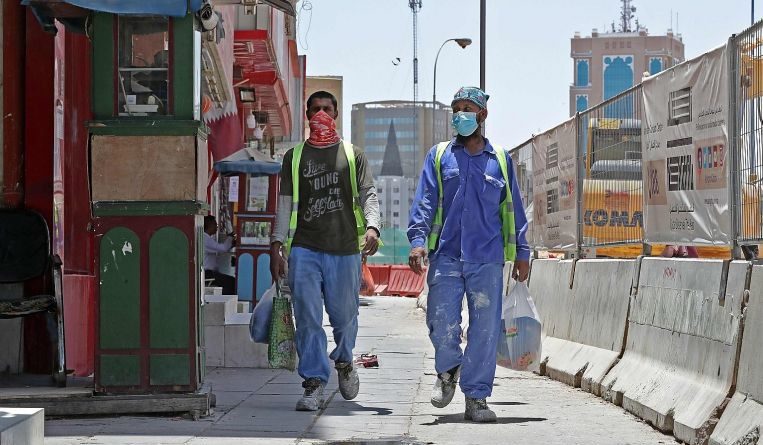EDITORIAL: The Straits Times says: Getting the right foreign worker balance
Workers wearing protective masks on a street in Doha, Qatar, on May 17. Like in Singapore, the outbreak in Qatar has centred on its foreign workers, who outnumber Qataris in the workforce by nearly 20 to one. Qatar’s ambition to host the World Cup has helped prompt changes to improve workers’ conditions, but the improvement has not been even, say activists.PHOTO: AGENCE FRANCE-PRESSE
.
.
The Straits Times says

Getting the right foreign worker balance
The Covid-19 pandemic and the high levels of infections among foreign workers have prompted some academics and members of non-governmental organisations to call for a reduction in Singapore’s dependence on such workers. However, in a rare joint statement, the Chinese, Malay and Indian chambers of commerce, as well as trade and industry associations, have pushed back, urging the Government to adopt a considered and calibrated approach to foreign worker policies, rather than taking any precipitous action.


Memento MaximaDigital Mktg.
@ [email protected]
RESERVE ADVERTISEMENT
.
The issue of foreign workers and their place in the labour force should not be tied to the Covid-19 pandemic. While the outbreak here has revealed that the living conditions of foreign workers must be improved, which is a work in progress, it should not be invoked as a rationale to change policies on foreign workers. Those policies should be determined by Singapore’s labour force and economic needs.
On this issue, the business community has made many salient points. Foreign workers perform critical roles in several industries, including construction, manufacturing, the marine and offshore industry, as well as parts of the service sector, such as maintenance work. Any drastic action to reduce the number of such workers would have serious consequences, including raising costs and prices; would hurt Singapore’s competitiveness in key areas; and lead to delays in the completion of projects. Singapore must also be mindful of the ageing of its workforce and the prospect of labour shortages in the future, as Deputy Prime Minister Heng Swee Keat has pointed out.


Memento MaximaDigital Mktg.
@ [email protected]
RESERVE ADVERTISEMENT
.
However, all that said, businesses must also be prepared to change the way they operate, particularly in the post-Covid-19 environment of greater digitalisation and higher levels of automation. There are several areas which are currently more labour-intensive than they need to be, especially construction where the ratio of foreign workers to local workers is 3:1, and parts of the manufacturing sector. There is considerable scope for the greater use of such labour-saving innovations as pre-fabrication, 3-D printing and robotics.
But this will need companies to step up their investments. Easy access to low-cost labour acts as a deterrent for them to do this. Therefore, while any drastic action to reduce the number of foreign workers is unwarranted, foreign worker levies will need to remain in place and even be progressively raised. At the same time, companies must take advantage of the various incentives that have been put in place for them to step up automation and digitalisation, which many have been too slow to do. Thus, while Singapore will continue to still need foreign workers for some time to come, companies must also show greater willingness to innovate and thereby reduce their reliance on such workers over time.


Memento MaximaDigital Mktg.
@ [email protected]
RESERVE ADVERTISEMENT
.
Read the latest on the Covid-19 situation in Singapore and beyond on our dedicated site here.
Get The Straits Times app and receive breaking news alerts and more. Download from the Apple App Store or Google Play Store now.










